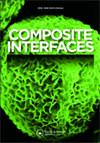KH-560偶联剂改性PVA纤维橡胶混凝土力学性能的多尺度分析
IF 2.4
4区 材料科学
Q3 MATERIALS SCIENCE, COMPOSITES
引用次数: 6
摘要
摘要两亲性硅烷偶联剂(SCA)改善了橡胶与水化产物两相之间的弱结合,填补了橡胶与水化产物之间的界面间隙,有效修复了橡胶与水化产物之间的界面缺陷。PVA纤维的加入主要改善了混凝土的抗裂性能和耐久性。然而,对这一问题的研究大多局限于现象学,忽视了原子结构层面的作用机制。因此,本研究从宏观力学性能、微细结构、化学成分和纳米光学水平等多尺度分析,探讨KH-560偶联剂增强PVA纤维-橡胶混凝土界面性能的增强机理。宏观力学试验结果表明,KH-560偶联剂可提高PVA橡胶混凝土的抗压、抗弯、抗剪强度,使其损伤形态也由脆性损伤转变为塑性损伤,混凝土抗压强度因加入PVA而略有降低,但耐久性和抗裂性得到增强。XRD (x射线衍射)、FT-IR(傅里叶变换红外光谱)和SEM(扫描电子显微镜)测试观察到一些凝胶和聚合物的存在,这些凝胶和聚合物填充了界面缝隙,有效地修复了界面缺陷。在纳米水平上对两相界面进行分子动力学模拟,发现KH560分子可以通过Si-O-Si化学键与C-S-H凝胶集体紧密连接,并且KH560分子键在C-S-H和橡胶界面之间分布不均匀,而改性剂KH560和PVA纤维的加入使界面上的氢键和离子键增多,增强了界面相互作用能。对PVA纤维-橡胶土材料进行SCA改性前后的宏观、微观、精细和纳米尺度的系统实验分析,最终在多尺度框架下对PVA-橡胶水泥基材料进行SCA改性的设计和性能提升。图形总结如图1所示。图形抽象本文章由计算机程序翻译,如有差异,请以英文原文为准。
Multi-scale analysis of mechanical properties of KH-560 coupling agent modified PVA fiber-rubber concrete
ABSTRACT Amphiphilic Silane coupling agent (SCA) improves the weak bond between the two phases of rubber and hydration products, fills the interfacial gaps and effectively repairs the interfacial defects between rubber and hydration products. The addition of PVA fibers mainly improves the cracking performance and durability of concrete. However, most of the studies addressing this issue have been limited to phenomenology, ignoring the mechanism of action at the atomic structure level. Therefore, this study investigates the strengthening mechanism of the interfacial properties of KH-560 coupling agent-reinforced PVA fiber-rubber concrete from the multi-scale analysis of macro-mechanical properties, micro and fine structure, chemical composition and nano-optical level. Based on the results of macro-mechanical tests, it was found that the KH-560 coupling agent could improve the compressive, flexural and shear strength of PVA-rubber concrete, so that the damage morphology also changed from brittle damage to plastic damage, and the compressive strength of concrete was slightly reduced due to the addition of PVA, but the durability and cracking resistance were enhanced. XRD (X-ray diffraction), FT-IR (Fourier transform infrared spectroscopy) and SEM (scanning electron microscopy) tests observed the presence of some gels and polymers that filled the interfacial slits and effectively repaired the interfacial defects. The two-phase interface was simulated by molecular dynamics at the nano level, and it was found that KH560 molecules could be closely connected with C-S-H gel collectively through Si-O-Si chemical bonding, and KH560 molecular bonds were unevenly distributed between the C-S-H and rubber interfaces, while the addition of modifier KH560 and PVA fibers caused more hydrogen and ionic bonds at the interface, which enhanced the interfacial interaction energy. Systematic experiments were conducted on PVA fiber-rubber soil materials before and after SCA modification under macroscopic, microscopic, fine and nano-level multi-scale analyses, which ultimately lead to the design and performance improvement of SCA modification of PVA-rubber cement-based materials in a multi-scale framework. The graphic summary is shown in Figure 1. GRAPHICAL ABSTRACT
求助全文
通过发布文献求助,成功后即可免费获取论文全文。
去求助
来源期刊

Composite Interfaces
工程技术-材料科学:复合
CiteScore
5.00
自引率
3.80%
发文量
58
审稿时长
3 months
期刊介绍:
Composite Interfaces publishes interdisciplinary scientific and engineering research articles on composite interfaces/interphases and their related phenomena. Presenting new concepts for the fundamental understanding of composite interface study, the journal balances interest in chemistry, physical properties, mechanical properties, molecular structures, characterization techniques and theories.
Composite Interfaces covers a wide range of topics including - but not restricted to:
-surface treatment of reinforcing fibers and fillers-
effect of interface structure on mechanical properties, physical properties, curing and rheology-
coupling agents-
synthesis of matrices designed to promote adhesion-
molecular and atomic characterization of interfaces-
interfacial morphology-
dynamic mechanical study of interphases-
interfacial compatibilization-
adsorption-
tribology-
composites with organic, inorganic and metallic materials-
composites applied to aerospace, automotive, appliances, electronics, construction, marine, optical and biomedical fields
 求助内容:
求助内容: 应助结果提醒方式:
应助结果提醒方式:


